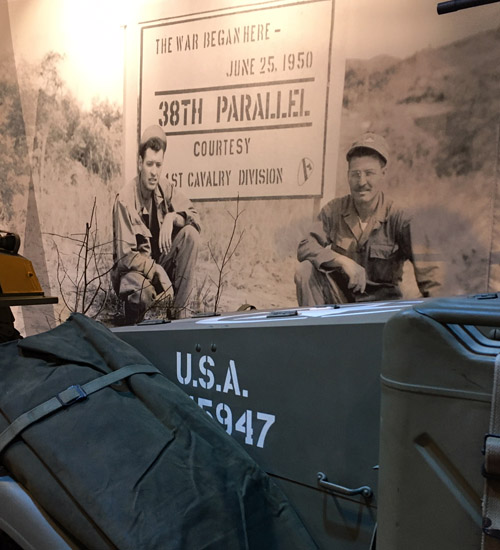Korean War

M7 Priest SPH – USA | ARTILLERY
M26A1 Pershing – USA | TANK
M24 Chaffee – USA | LIGHT TANK
M39 Armored Utility Vehicle – USA | PRIME MOVER
M2A1 Half Track – USA | HALF-TRACK
M4A3E8 Sherman – USA | TANK
At the end of World War II, the Soviet Union and the United States liberated Korea from imperial Japanese colonial control on August 15th, 1945. After the war had ended, Korea was divided at the 38th parallel into two zones of occupation, the Soviets administered the northern half and the Americans administered the southern half. With the border set at the 38th parallel in 1948, two sovereign states were established because of geopolitical tensions of the Cold War (between the Soviet Union and the United States). A socialist state was established in the north under the communist leadership of Kim Il-sung and a capitalist state in the south under the anti-communist leadership of Syngman Rhee. Both governments of the two new Korean states claimed to be the sole legitimate government of all of Korea, and neither accepted the border as permanent.
The Korean War began on June 25, 1950, when some 75,000 soldiers from the North Korean People’s Army poured across the 38th parallel, the boundary between the Soviet-backed Democratic People’s Republic of Korea to the north and the pro-Western Republic of Korea to the south. This invasion was the first military action of the Cold War. By July, American troops had entered the war on South Korea’s behalf. As far as American officials were concerned, it was a war against the forces of international communism itself. After some early back-and-forth across the 38th parallel, the fighting stalled, and casualties mounted with nothing to show for them. Meanwhile, American officials worked anxiously to fashion some sort of armistice with the North Koreans. The alternative, they feared, would be a wider war with Russia and China–or even, as some warned, World War III. Finally, in July 1953, the Korean War came to an end. In all, some 5 million soldiers and civilians lost their lives in what many in the U.S. refer to as “the Forgotten War” for the lack of attention it received compared to more well-known conflicts like World War I and II and the Vietnam War.
The Korean peninsula would continues to be caught in the Cold War rivalry, but the survival of the Republic of Korea is kept alive the hope of civil liberties, democracy, economic development, and eventual unification. There is little desire from North Korea for peace or reunification .



